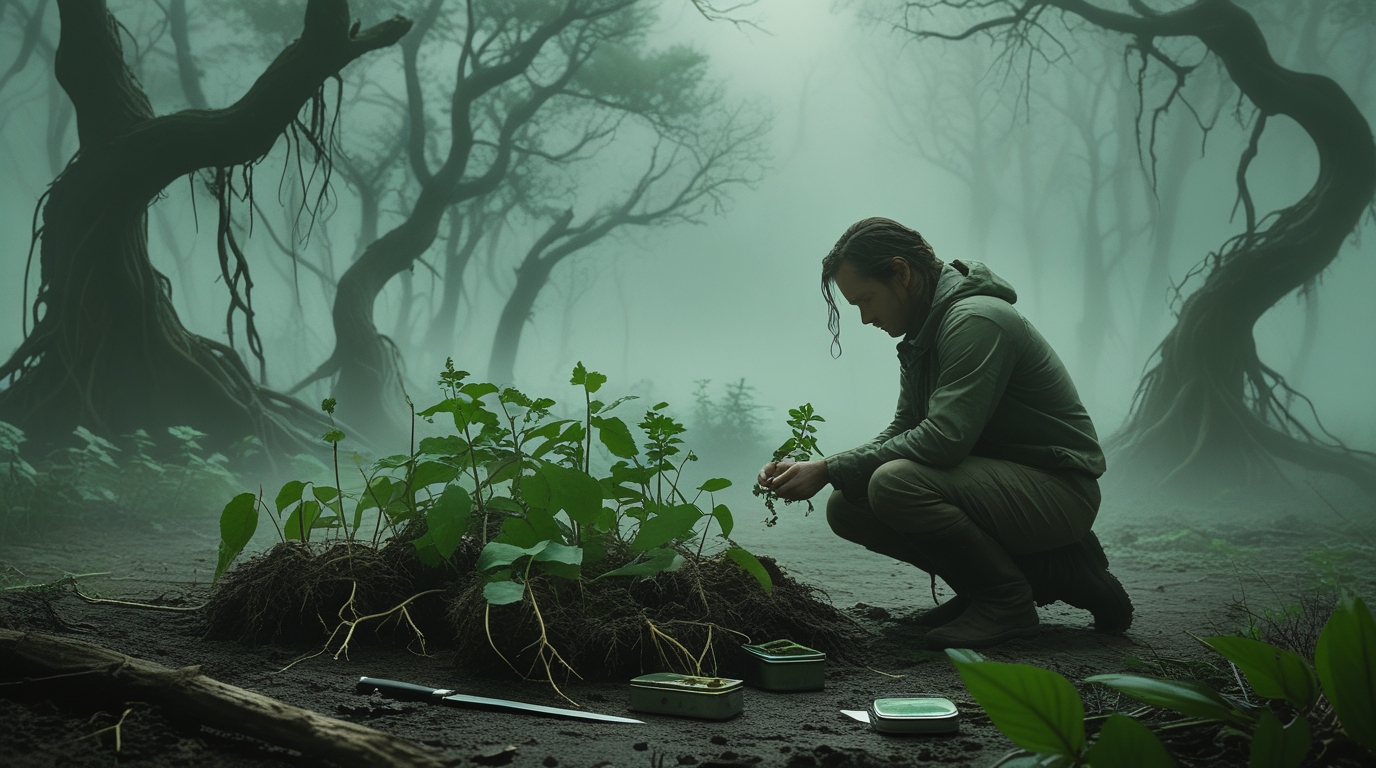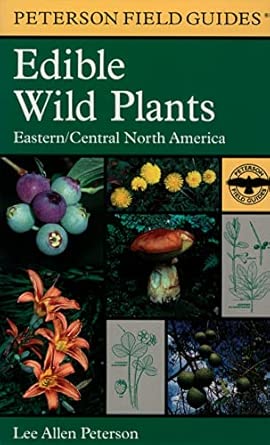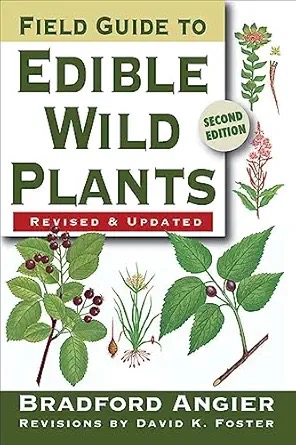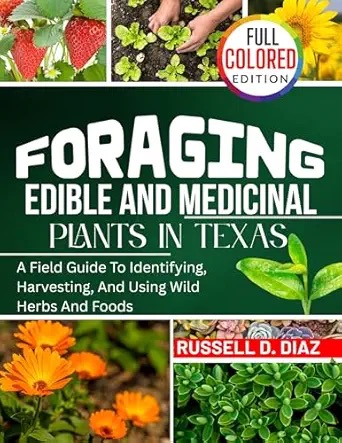The Ultimate Guide to Edible Plants in the Wild

The Ultimate Guide to Edible Plants in the Wild
Identifying Edible Plants
Visual Identification
Identifying edible plants starts with understanding their visual characteristics. This includes the shape, size, color, and texture of leaves, as well as the presence of flowers or fruits. For instance, dandelions, easily recognized by their bright yellow flowers, are entirely edible, from their roots to their petals. Knowing how to identify these features is crucial to avoid confusing edible plants with potentially harmful ones.
Seasonal Availability
Edible plants have their seasons. For example, wild garlic typically emerges in spring, offering a window of opportunity for harvest. This awareness is key for planning your foraging activities.
Habitat Recognition
Understanding the preferred habitats of edible plants can lead you directly to them. For example:
- Wild berries often thrive in the partial shade of forests.
By familiarizing yourself with these habitats, you can target your searches more effectively.
Safety Precautions and Ethical Foraging
Avoiding Toxic Plants
One of the biggest challenges in foraging is the risk of mistaking toxic plants for edible ones. To mitigate this risk, follow the rule of thumb: when in doubt, leave it out. This approach is vital for safe foraging.
Sustainable Harvesting Practices
Ethical foraging means taking only what you need and leaving enough behind. This includes:
- Not uprooting entire plants (unless you’re harvesting roots).
- Being mindful of the ecological impact of your foraging.
Adopting sustainable practices helps preserve natural resources.
Legal Considerations
Foraging isn’t free from legal restrictions. It’s essential to research and adhere to the regulations in your region to avoid legal issues and support conservation efforts.
Nutritional Benefits and Uses
Vitamins and Minerals
Many wild plants are rich in vitamins and minerals. For example, stinging nettles are a great source of iron, vitamin C, and protein. Incorporating these wild edibles into your meals can provide health benefits.
Medicinal Properties
Some edible plants have medicinal properties. For instance, yarrow has been used for centuries to treat wounds and reduce fever. Learning about these benefits adds a valuable dimension to your foraging knowledge.
Culinary Uses
Edible wild plants can enhance your culinary experience. For example, wild garlic can be used similarly to cultivated garlic but offers a milder flavor. Experimenting with these plants in your recipes can be a delightful way to connect with nature.
Foraging Techniques and Tools
Essential Foraging Tools
To forage effectively, you’ll need some basic tools:
- A durable bag or basket for carrying your finds.
- A pair of gloves to protect your hands.
- A field guide or a mobile app for identifying plants.
These tools make the foraging process smoother and ensure that you’re picking the right plants.
Practical Foraging Methods
When you’re out in the wild, your approach to foraging will greatly impact your success. Start by walking slowly and scanning the ground closely. Look for plants in abundance; these are often the ones that are safe and sustainable to harvest.
Ethical Foraging Practices
Ethical foraging involves being mindful of wildlife and their habitat. Avoid foraging in areas where plants are scarce or where wildlife depends heavily on those plants for food. Always forage with the future in mind.
Preparation and Preservation of Wild Edibles
Cleaning and Preparing
Once you’ve gathered your edible plants, the next step is to clean and prepare them. Begin by rinsing your foraged goods in clean water. Some plants may require specific preparation methods, such as boiling or blanching.
Drying and Storing
For long-term preservation, drying is effective. Herbs, flowers, and leafy greens can be tied into small bundles and hung upside down in a dry area. Once dried, these can be stored in airtight containers.
Fermenting and Pickling
Fermenting and pickling extend the shelf life of foraged plants and enhance their flavor. Wild garlic, for instance, can be pickled. These methods offer delicious ways to enjoy your foraged finds.
Integrating Wild Edibles into Your Diet
Simple Recipes and Uses
Incorporating wild edibles into your diet can be simple. Start with small amounts to see how you like the flavors. For example:
- Dandelion greens can be used in salads.
- Wild berries can be added to yogurts or baked goods.
Nutritional Boosts to Everyday Meals
Many wild edibles are nutrient-dense. Nettle leaves, for example, can be a potent addition to soups or teas. Incorporating these plants into your diet can diversify your nutrient intake.
Creative Culinary Experiments
For those who love to cook, wild edibles offer an opportunity for creativity. Experiment with making syrups from wildflowers or adding foraged herbs to your favorite sauces. The unique flavors can transform ordinary meals.
Advanced Foraging Strategies
Understanding Plant Families
Getting to know plant families can make foraging safer and easier. For example, the Apiaceae family includes both edible plants like carrots and toxic ones like hemlock.
Seasonal and Ecological Patterns
Maximizing your foraging success requires an understanding of seasonal and ecological patterns. Observing these patterns can lead you to abundant harvests.
Foraging in Various Ecosystems
Expanding your foraging to different ecosystems increases the variety of plants available. Each environment offers unique edible plants.
Troubleshooting Common Foraging Issues
Misidentification
Misidentifying plants can lead to health risks. Always cross-reference multiple sources when identifying a plant.
Overharvesting
Overharvesting depletes resources and damages ecosystems. Familiarize yourself with the concept of ‘sustainable yield’ to maintain biodiversity.
Dealing with Pests and Diseases
Plants in the wild are susceptible to pests and diseases. Avoid plants with unusual spots, molds, or insects.
Expanding Your Foraging Knowledge
Joining Foraging Communities
Joining a foraging community can increase your learning curve. Whether it’s an online forum or a local club, these communities offer invaluable knowledge sharing.
Advanced Foraging Workshops and Courses
Participating in workshops and courses provides hands-on experience. These opportunities often cover advanced topics like medicinal uses and culinary applications.
Continual Learning and Experimentation
The world of foraging is vast. Committing to continual learning and experimentation is key to becoming proficient. Document your experiences to track your progress.
Putting It All Together
Embracing a Sustainable Foraging Lifestyle
Incorporating foraged foods into your diet promotes a deeper connection with nature and a sustainable lifestyle. By foraging, you’re participating in an age-old practice that respects the environment.
Key Takeaways for Aspiring Foragers
As you embark on your foraging journey, remember the importance of safety, sustainability, and respect for nature. Your efforts will be rewarded with nutritious and delicious finds, and a profound sense of accomplishment.
Next Steps on Your Foraging Path
Start small, focusing on easily identifiable plants. Gradually expand your knowledge and skills. Most importantly, enjoy the journey of exploration and the benefits of integrating wild edibles into your life.
Compare Products
Diving into the world of edible plants opens up a fascinating realm of natural foods right at your doorstep. As you’ve learned about the importance of visual identification, you might be considering guides like the “Field Guide to Edible Wild Plants: Eastern and Central North America,” Sam Thayer’s “Field Guide to Edible Wild Plants: Of Eastern and Central North America,” and the “Field Guide to Edible Wild Plants, Midwest.” Each of these guides offers a unique perspective on foraging in different regions.
Comparing these guides can significantly influence your foraging journey, especially when matched with your personal interests and regional availability of plants. Whether you’re an adventurous cook looking to explore new flavors, or a survival enthusiast aiming to expand your knowledge of safe
| Feature / Product | Field Guide to Edible Wild Plants: Eastern and central North America | Sam Thayer’s Field Guide to Edible Wild Plants: Of Eastern and Central North… | Field Guide to Edible Wild Plants | Midwest Foraging for Beginners: Exploring the Natural Harvests of the… | FORAGING EDIBLE AND MEDICINAL PLANTS IN TEXAS (FULL COLORED): A Field Guide… |
|---|---|---|---|---|---|
 |
 |
 |
 |
 |
|
| $48.87 | $63.21 | $4.62 | $31.45 | $13.88 | |
| Shop now → | Shop now → | Shop now → | Shop now → | Shop now → | |
| Book Information | |||||
| Format | Paperback | Paperback | Kindle | Paperback | Paperback |
| Page Count | 384 | 400+ | Digital | 246 | 170 |
| Plants Covered | 400+ | 31 species | 400+ | 100+ | 200+ |
| Illustrations | Black & White | Color Photos | Black & White | Full Color | Full Color |
| Regional Focus | Eastern/Central | Eastern/Central | General | Midwest | Texas |
